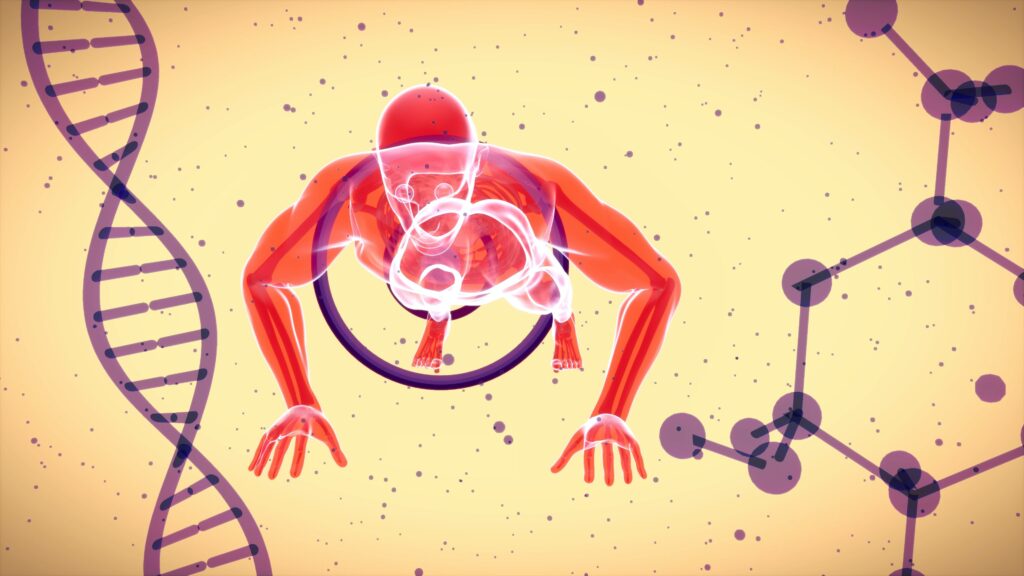
Discovery and new science
Gilbert’s Syndrome was first identified in 1901 by Dr Gilbert, as a benign condition causing jaundice. Since then, scientists have mapped our genome and discovered why we have Gilbert’s Syndrome. More has been explained about how the mutated gene impacts our bodies in different ways. Each year we discover new information.
As we have improved our understanding of our genes, we have also discovered that there are different types of Gilbert’s Syndrome. People from different populations have variations of Gilbert’s Syndrome.
The important gene and its different types
The important gene is UGT1A1 . https://medlineplus.gov/genetics/gene/ugt1a1/
Mutations in this gene happen in people all over the world, but to different levels depending on your background. The main impact is that people with this gene difference produce less of an enzyme – a chemical that helps process things in the body. Bilirubin is one of the substances that this enzyme processes. See more about bilirubin here.
One of the great things about having more bilirubin in the bloodstream is that it appears to help protect people from some diseases such as cardiovascular diseases and diabetes type II. Some scientists have suggested it could be a positive evolution.
Research shows that the effect is different depending on your heritage:
For example, individuals with Eastern Asian ancestry (i.e. Chinese and Japanese) appear to have the lowest circulating bilirubin concentrations (prevalence of GS ∼2%), whereas individuals originating from India, Southern Asia and the Middle East demonstrate significantly increased rates of GS, approximating ∼20% (Figure 2). Caucasian ethnicity is associated with a 2–10% prevalence of GS .
https://www.tandfonline.com/doi/full/10.1080/10408363.2018.1428526

Inheritance
You can inherit Gilbert’s Syndrome from one or both of your parents. But, these are different types:
Gilbert syndrome can have different inheritance patterns. When the condition is caused by the UGT1A1*28 change in the promoter region of the UGT1A1 gene, it is inherited in an autosomal recessive pattern, which means both copies of the gene in each cell have the mutation. The parents of an individual with an autosomal recessive condition each carry one copy of the mutated gene, but they typically do not show signs and symptoms of the condition.
When the condition is caused by a missense mutation in the UGT1A1 gene, it is inherited in an autosomal dominant pattern, which means one copy of the altered gene in each cell is sufficient to cause the disorder. A more severe condition known as Crigler-Najjar syndrome occurs when both copies of the UGT1A1 gene have mutations.
https://medlineplus.gov/genetics/condition/gilbert-syndrome/#inheritance
Other things that impact your Gilbert’s Syndrome symptoms
The current thinking is that there are different versions of mutation of the UGT1A1 gene. Because of this and a range of other factors you might experience symptoms. This is where the importance of understanding that your genes are only ONE piece of the jigsaw comes in. The key to managing any genetic condition or trait is to understand that there are many other things that impact how it works in you.
In Gilbert’s Syndrome, of whatever type, other things will impact your symptoms. One reason few people experience symptoms before puberty is because the hormonal changes that occur at that time trigger symptoms. Hormones are one factor – from life changes to menstruation, this will impact your symptoms.
Other factors which affect your Gilbert’s Syndrome symptoms include – vigorous exercise, fasting, dehydration, a virus, external toxins, stress, sleep deprivation and many more. The pathways of the liver which use the enzyme we are deficient in as a result of this gene mutation are affected by all of these internal and external factors.
It’s worth understanding that genes are only one component of how you live your life. AND you can control many of the other components to enhance your wellbeing. But don’t forget you also benefit from the protective effects that your Gilbert’s Syndrome offers.
Find out more and stay up to date
As a member of the Genetic Alliance, a charity with a membership of over 200 patient organisations in the UK that supports people with genetic conditions, I stay in touch with the latest on support for people with genetic conditions. If you want to find out more about genetic conditions check out their website https://geneticalliance.org.uk/ You can also find out more about genetic testing in the UK.
With continued discoveries about how a gene difference can influence us, and the adaptation of science to support our health, as well as how lifestyle and lifestage are key, it’s important to stay up to date with understanding Gilbert’s Syndrome. This way you can take control of your health and happiness.
Sign up / donate to help keep this information coming!
Wishing you well

